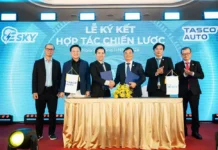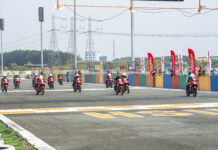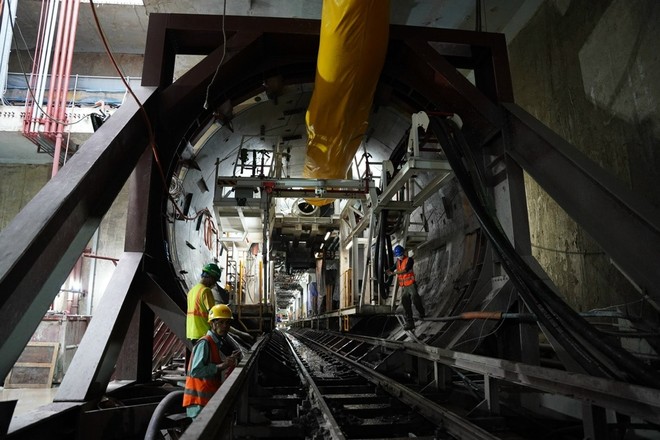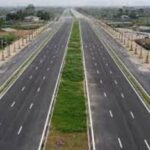The key underground constructions that are encouraged for investment and construction in the city by 2045 include: 8 urban railway routes with a total length of approximately 214.9 km, featuring 125 stations, of which 49.5 km and 41 stations are underground.
Construction of tunnels and underground stations for the Nhon-Hanoi Railway project
Hanoi is seeking public opinions on the draft resolution of the Hanoi People’s Council on issuing a List of Underground Constructions Encouraged for Investment and Construction in Hanoi (implementing Clause 3, Article 19 of the Capital Law 2024).
According to reports, the underground constructions in Hanoi have not kept pace with the city’s role as the capital. Although there have been initial efforts in developing underground technical infrastructure and transportation, the planning lacks synchronization, investment mechanisms are unattractive, and management remains fragmented, creating major bottlenecks.
Meanwhile, the Master Plan of Hanoi Capital for the period of 2021-2030, with a vision towards 2050, approved by the Prime Minister in Decision No. 1569/QD-TTg dated December 12, 2024, clearly states the view on spatial organization, considering underground space as one of the five critical dimensions for the capital’s development: public space; elevated space; underground space; cultural and creative space; and digital space.
Developing synchronous infrastructure and modern transportation is one of the five pillars of the capital’s development, emphasizing the importance of public transportation, particularly the urban railway system (including both underground and elevated railways and stations) to address fundamental constraints hindering the city’s progress.
The Master Plan directs that “public transportation in Hanoi must be modern and capable of handling large passenger volumes, utilizing underground space without occupying ground-level areas, akin to the transportation systems in contemporary global cities.”
Therefore, establishing a synchronous and modern infrastructure system is identified as a pivotal pillar for the city’s development, serving as a key to renovating and beautifying the existing urban areas and expanding the scope for future growth. It also provides a foundation for building a civilized and modern metropolis.
According to the draft resolution, the list of underground constructions encouraged for investment and construction in Hanoi comprises: constructions serving the development of the urban railway system (including underground railways and stations); underground connections between different underground constructions (linking underground railway stations, underground public utilities, underground parking lots, etc.); constructions serving urban transportation to address urgent urban issues (including road tunnels, underground roads, and underground parking lots); underground technical infrastructure; underground public service constructions with cultural and tourism functions; and underground constructions funded by non-state budget sources.
The key underground constructions encouraged for investment and construction in the city by 2045 encompass: 8 urban railway routes spanning approximately 214.9 km with 125 stations, of which 49.5 km and 41 stations are underground.
Additionally, there are 83 constructions serving the urban transportation system, including 5 road tunnels and 78 underground parking lots. The list of technical infrastructure constructions includes 127 streets with underground power lines, telecommunication cables, electricity cables, and shared technical infrastructure constructions. Other encouraged underground constructions are defined according to Article 1.
P.P (ANTĐ)













































![[VIDEO] Wealthy Hoang Kim Khanh experiences Koenigsegg Regera on a runway in Sweden](https://vnauto.net/wp-content/uploads/2024/02/xehay-HKK-100224-1-100x70.jpg)
